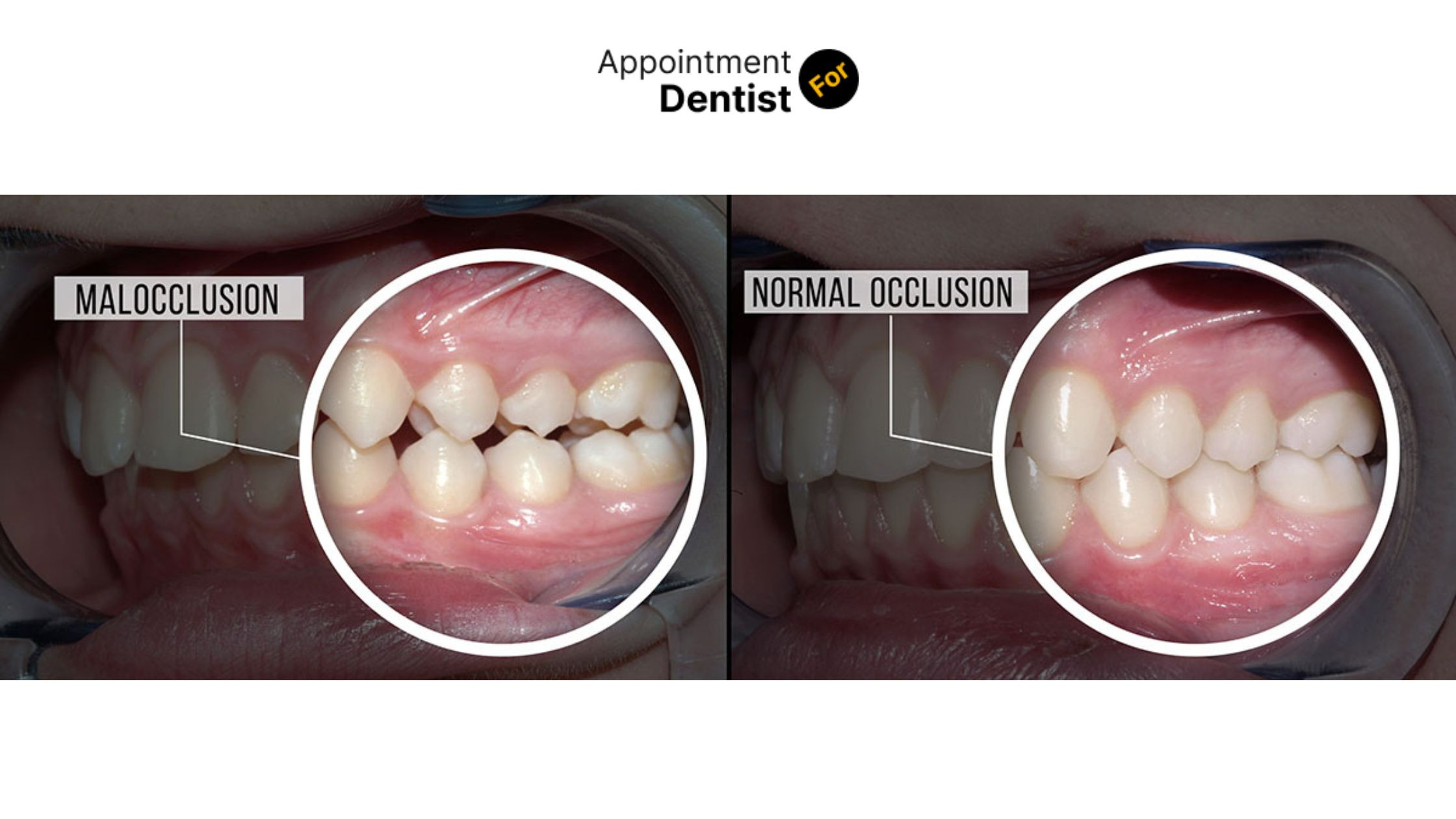Dental Solutions for Addressing Malocclusion (Misaligned Teeth)
Posted on July 24, 2024 by Admin

Malocclusion, or misalignment of teeth, is a common dental concern affecting many individuals. It can impact both the aesthetic appearance of your smile and the functionality of your bite. Fortunately, modern dentistry offers various solutions to address malocclusion and restore proper alignment. In this blog post, we will explore different dental solutions available for correcting misaligned teeth and achieving optimal oral health.
Understanding Malocclusion
Malocclusion occurs when teeth are not properly aligned when the jaws are closed. This misalignment can lead to a range of issues, including:
- Difficulty chewing or biting
- Speech problems
- Increased risk of tooth wear and decay
- Gum disease
- Temporomandibular joint (TMJ) disorders
Common Types of Malocclusion
- Class I Malocclusion: Normal bite with slight crowding or spacing.
- Class II Malocclusion: Overbite, where the upper teeth significantly overlap the lower teeth.
- Class III Malocclusion: Underbite, where the lower teeth are positioned ahead of the upper teeth.
- Crossbite: Misalignment where some upper teeth bite inside the lower teeth.
- Open Bite: Space remains between the upper and lower teeth when the mouth is closed.
Must Read: Treating Black Hairy Tongue: Causes and Solutions
Dental Solutions for Malocclusion
-
Braces
Traditional metal braces are a time-tested solution for correcting malocclusion. They consist of metal brackets and wires that gradually move the teeth into the desired position. Modern braces can also include ceramic or clear materials for a more discreet appearance.
- Benefits: Effective for complex cases, customizable, and reliable.
- Considerations: Requires regular adjustments, potential discomfort.
-
Clear Aligners
Clear aligners, such as Invisalign, are a popular alternative to traditional braces. These custom-made, removable trays gradually shift teeth into alignment without the need for metal brackets or wires.
- Benefits: Discreet, removable, and comfortable.
- Considerations: Requires discipline to wear as instructed, may not be suitable for severe cases.
-
Retainers
Retainers are used after braces or aligners to maintain teeth in their new positions. They can be fixed or removable, and their use is crucial for preventing teeth from shifting back.
- Benefits: Essential for long-term stability.
- Considerations: Must be worn consistently as prescribed.
-
Orthognathic Surgery
For severe malocclusion cases that do not respond to braces or aligners, orthognathic surgery (jaw surgery) may be necessary. This surgical procedure realigns the jaws to improve function and appearance.
- Benefits: Effective for significant misalignment.
- Considerations: Involves surgical risks and recovery time.
-
Dental Bonding and Veneers
Dental bonding and veneers can address minor misalignments and imperfections. Bonding involves applying a tooth-colored resin to correct small gaps or chips, while veneers are thin shells that cover the front surface of teeth.
- Benefits: Quick cosmetic improvements.
- Considerations: Limited to minor adjustments.
-
Functional Appliances
Functional appliances, such as palate expanders, can help guide the growth of the jaw and teeth, particularly in growing children and adolescents.
- Benefits: Can address developmental issues early on.
- Considerations: Requires cooperation and adjustment.
Must Read: Addressing and Managing Tartar Buildup: Effective Techniques
Choosing the Right Solution
Selecting the best solution for malocclusion depends on various factors, including the severity of the misalignment, age, and personal preferences. Consulting with an orthodontist or dental specialist is essential for determining the most appropriate treatment plan.
Faqs
-
1. How to fix malocclusion in adults?
Malocclusion in adults can be addressed using several treatments:
- Braces: Traditional metal or ceramic braces can effectively correct misalignment in adults.
- Clear Aligners: Removable and discreet aligners like Invisalign are an option for many adults.
- Orthognathic Surgery: For severe cases, jaw surgery may be necessary to realign the teeth and jaws.
- Retainers: Used post-treatment to maintain alignment. Consulting with an orthodontist will help determine the best treatment for your specific needs.
-
2. Is malocclusion harmful?
Yes, malocclusion can have several harmful effects:
- Dental Issues: It can lead to uneven tooth wear, decay, and gum disease due to improper alignment and cleaning difficulties.
- Functional Problems: Difficulty chewing and speaking, as well as increased stress on the jaw joints, can occur.
- Aesthetic Concerns: Misalignment may affect the appearance of your smile, impacting self-confidence.
-
3. Is malocclusion painful?
Malocclusion itself is not always painful, but it can cause discomfort and pain in certain situations:
- Jaw Pain: Misalignment may lead to jaw strain or temporomandibular joint (TMJ) disorders.
- Tooth Sensitivity: Improper alignment can sometimes cause uneven tooth wear or sensitivity.
- Headaches: Stress on the jaw muscles can lead to headaches or migraines.
-
4. Does malocclusion get worse with age?
Malocclusion does not necessarily get worse with age, but several factors can contribute to changes:
- Dental Wear and Tear: As you age, teeth may shift due to natural wear or dental issues.
- Bone Loss: Loss of bone density in the jaw can affect tooth alignment.
- Changes in Jaw Function: Long-term malocclusion may exacerbate issues like TMJ disorders or discomfort.
Recent Post
- The Importance of Oral Health Education for Children
- How to Choose the Right Orthodontic Treatment for Adults
- The Link Between Oral Health and Stroke Risk
- How to Address and Prevent Gum Recession
- Innovations in Dental Anesthesia: Pain-Free Procedures
- The Role of Saliva in Oral Health: Functions and Disorders
- Exploring Holistic Dentistry: What You Need to Know
- How Oral Health Affects Your Immune System
- The Benefits of Using Dental Probiotics
- Oral Health and Pregnancy: Myths and Facts